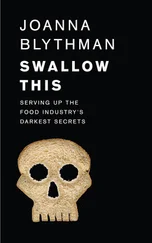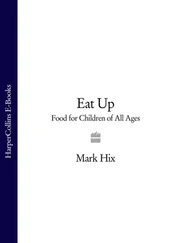1 ...6 7 8 10 11 12 ...15 Most people know that, eaten in significant quantity, sweets and chocolate confectionery are bad for children’s health. If parents don’t intervene, the sheer weight of commercial pressure on children to eat confectionery is so strong that they will end up eating much more than the relatively harmless quantity of ‘add-on’ sweets we often associate with our own childhood.
The dilemma for worried parents is how to discourage consumption of sugary confectionery without appearing to ban or proscribe it, especially because it is such a big component of the ubiquitous children’s diet. However, despite the pressure on children to want confectionery – and to replace other more wholesome foods with it – they can be influenced to restrict or severely limit consumption of their own volition.
How can parents achieve this?
We need to start approaching the problem not in a futile ‘ Sweets are bad, you aren’t allowed them ’ way but as part of an overall strategy towards eating, outlined in detail elsewhere in this book, that will encourage children to select food that is nutritious and good for them. The objective – a surprisingly achievable goal – is to produce children who will happily eat their Clementine or yogurt when the rest of the class is munching away on fatty-sugary sweets.
Parents can achieve this by using the general approach outlined in Part Two, Breaking the Mould at Home, which is aimed at producing children who, of their own accord, will enjoy a wide range of food and select a diet that is broadly wholesome and good for them. Part Three, The Gentle Art of Persuasion, is a troubleshooting section to help parents who find it hard to make the approach in Part Two stick. Part Seven, Nitty-gritty Ideas and Recipes for Inspiration, lists wholesome foods that can be offered in specific situations as an alternative to confectionery and other junk food. Finally, for a strategy that tackles the vexed question of sweets head-on, see pages 91–5, Sweets, Treats and Bans.
Just as sweets have become a significant part of many children’s diet, so consumption of crisps and crunchy, puffy ‘extruded snacks’ amongst children has grown to unprecedented levels.
Children eat crisps on the way to school, at breaktime, for lunch, for afternoon snack, instead of tea or at supper. No school playground, high street or urban green space is free from discarded crisp packets blowing in the wind. Many children will eat at least a packet each day.
When the caterer Gardner Merchant surveyed children’s eating habits in 1998, it found that 20 per cent of schoolchildren bought crisps or savoury (extruded) snacks on their way home from school each day. Crisps and savoury snacks were also the most common item in a packed lunch box: 57 per cent of children ate them for packed lunch while the more traditional meat or cheese sandwich trailed at 38 and 37 per cent respectively. Such habits are regarded as normal.
Ironically, crisps seem to have taken on a misleadingly ‘healthy’ profile amongst some parents and children. They are commonly seen as a healthier option than sweets because they are savoury and are made from potatoes or corn – both wholesome starchy foods. For many children who won’t accept other savoury food such as a sandwich, filled roll or salad, crisps are routinely offered as an acceptable alternative. But the reality is that although potatoes – and, to a lesser extent, corn – are a wholesome food that children can be encouraged to eat in some quantity, crisps, and even more so extruded snacks, are not.
Here’s why:
• They are fatty:
100 grams of boiled potato contain only 0.1 milligrams of fat.
100 grams of regular crisps contain 37.6 milligrams of fat.
100 grams of ‘low-fat’ crisps contain 21.5 grams of fat.
‘Low-fat’ crisps are a contradiction in terms: crisps and extruded snacks are always fatty foods.
• They are salty:
100 grams of boiled potato contain 7 milligrams of sodium.
100 grams of regular or ‘low-fat’ crisps contain 1,070 milligrams of sodium.
No wonder they make children extremely thirsty.
• They are sweet:
Although saltiness is the first flavour that hits you when you eat crisps, all but the most basic salted crisps contain sugar or artificial sweeteners to give flavour. Children eat too much of the former anyway and there are health concerns over the safety of the latter (see pages 6–7).
• They often contain undesirable additives:
Many extruded snacks contain monosodium glutamate, for example, a chemical flavour enhancer that has been widely linked to allergic reactions in sensitive people. Acidity regulators are routinely used to balance the other chemical flavourings in crisps. Additives such as these have no benefits for health whatsoever and increase the total intake of unnecessary chemicals that children eat – an intake that many health experts would like to see reduced.
• They usually contain chemical flavourings:
These totally synthetic flavourings are presumed safe on very thin scientific grounds because there is, as yet, no evidence that they cause harm. However, the long-term toxicological effects on modern children – who may nowadays get a surprisingly large cocktail of them – have not been studied.
• They may contain chemical or natural colour. These can cause allergic and other reactions in some people.
To sum up the nutritional contents of all those bag snacks, they represent a large dose of everything you don’t want children to eat and a very small amount of anything you might want them to eat. The nutritional goodness of any reasonably wholesome ingredient – such as potatoes, corn or wheat – is totally dwarfed by fat, salt, sweet flavourings and undesirable industrial additives.
But as well as being nutritionally unbalanced, the larger-than-life, mouth-mugging qualities of crisps and extruded snacks have a pernicious effect on young tastebuds, accustoming them to hefty servings of that all-too-familiar fat/salt/sugar trilogy so omnipresent in junk food. A taste for this will certainly distort the palate and reduce a child’s ability to appreciate real, natural food that lacks these heavy-handed artificial tastes. Just as we would find it unpleasant to drink orange juice after brushing our teeth, so children accustomed to the taste effect of crisps and other junk food will find it harder to like or appreciate a wider range of more subtle, straightforward, untampered-with flavours.
Despite the poor nutrition they offer, and the junk-food palate they are likely to encourage, crisps and extruded snacks have become the ubiquitous ‘savoury’ convenience foods for children. They are cheap, though not necessarily good value for money, and they keep for ages. Pre-wrapped and easily opened, they are the lazy alternative to a more wholesome snack that might need to be prepared at home. When we are tired or under pressure, it’s very easy just to pop that bag of crisps into the schoolbag rather than filling a roll or even washing an apple.
However, if we want our children to grow up to be adults who like wholesome, natural food and appreciate a wide range of flavours, crisps and extruded snacks are one significant category in the modern ‘children’s diet’ they are much better off without. An occasional bag of crisps is not a cause for concern. But if children are eating them every day, sometimes twice a day, and eating them in preference to good food, then they can become a problem.
That is why it is best to strike these bag snacks off your routine shopping list and turn instead to Twenty-five Good Snacks (pages 237–8), which lists alternatives that appeal to many children. For alternative packed lunch ideas, see Ten Good Packed Lunches (pages 259–62)
Читать дальше











